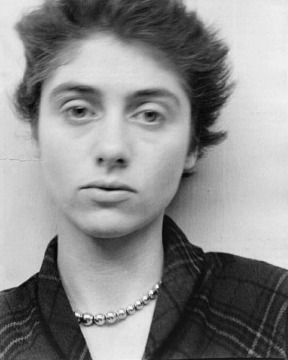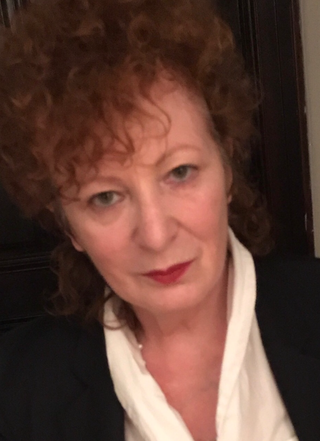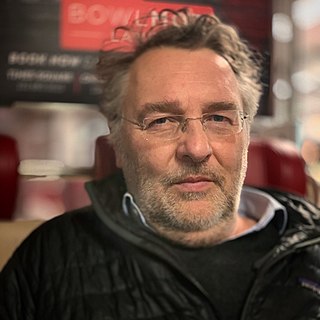Related Research Articles

Diane Arbus was an American photographer. She photographed a wide range of subjects including strippers, carnival performers, nudists, people with dwarfism, children, mothers, couples, elderly people, and middle-class families. She photographed her subjects in familiar settings: their homes, on the street, in the workplace, in the park. "She is noted for expanding notions of acceptable subject matter and violates canons of the appropriate distance between photographer and subject. By befriending, not objectifying her subjects, she was able to capture in her work a rare psychological intensity." In his 2003 New York Times Magazine article, "Arbus Reconsidered", Arthur Lubow states, "She was fascinated by people who were visibly creating their own identities—cross-dressers, nudists, sideshow performers, tattooed men, the nouveaux riches, the movie-star fans—and by those who were trapped in a uniform that no longer provided any security or comfort." Michael Kimmelman writes in his review of the exhibition Diane Arbus Revelations, that her work "transformed the art of photography ". Arbus's imagery helped to normalize marginalized groups and highlight the importance of proper representation of all people.

Nancy Goldin is an American photographer and activist. Her work often explores LGBT subcultures, moments of intimacy, the HIV/AIDS crisis, and the opioid epidemic. Her most notable work is The Ballad of Sexual Dependency (1986). The monograph documents the post-Stonewall, gay subculture and includes Goldin's family and friends. She is a founding member of the advocacy group P.A.I.N.. She lives and works in New York City.

Lewis "Duke" Baltz was an American visual artist, photographer, and educator. He was an important figure in the New Topographics movement of the late 1970s. His best known work was monochrome photography of suburban landscapes and industrial parks which highlighted his commentary of void within the "American Dream".
Robert Adams is an American photographer who has focused on the changing landscape of the American West. His work first came to prominence in the mid-1970s through his book The New West (1974) and his participation in the exhibition New Topographics: Photographs of a Man-Altered Landscape in 1975. He has received two Guggenheim Fellowships, a MacArthur Fellowship, the Deutsche Börse Photography Prize and the Hasselblad Award.

Catherine Sue Opie is an American fine-art photographer and educator. She lives and works in Los Angeles, as a professor of photography at University of California at Los Angeles.

Garry Winogrand was an American street photographer, known for his portrayal of U.S. life and its social issues, in the mid-20th century. Photography curator, historian, and critic John Szarkowski called Winogrand the central photographer of his generation.
Lee Friedlander is an American photographer and artist. In the 1960s and 1970s, Friedlander evolved an influential and often imitated visual language of urban "social landscape," with many of his photographs including fragments of store-front reflections, structures framed by fences, posters and street signs. His work is characterized by its innovative use of framing and reflection, often using the natural environment or architectural elements to frame his subjects. Over the course of his career, Friedlander has been the recipient of numerous awards and his work has been exhibited in major museums and galleries worldwide.
Sarah Sze is an American artist and professor of visual arts at Columbia University. She has exhibited internationally and her works are in the collections of several major museums. Sze's work explores the role of technology and information in contemporary life utilizing everyday materials. Drawing from Modernist traditions, Sze's work often represents objects caught in suspension.

Judith Joy Ross is an American portrait photographer. Her books include Contemporaries (1995), Portraits (1996), Portraits of the Hazleton Public Schools (2006) and Protest the War (2007), "exploring such themes as the innocence of youth, the faces of political power, and the emotional toll of war".
Malerie Marder is an American photographer and artist who lives and works in Los Angeles, California.
Sarah Jones is a British visual artist working primarily in photography. Her practice is rooted in art history, and she draws influence from topics such as psychoanalysis, adolescence, and the Victorian period. She gained international recognition in the mid 1990s coinciding with the completion of her MA in Fine Art at Goldsmiths College in London in 1996.
Andrea Modica is an American photographer and professor of photography at Drexel University. She is known for portrait photography and for her use of platinum printing, created using an 8"x10" large format camera. Modica is the author of many monographs, including Treadwell (1996) and Barbara (2002).
Leo Rubinfien is an American photographer and essayist who lives and works in New York City. Rubinfien first came to prominence as part of the circle of artist-photographers who investigated new color techniques and materials in the 1970s.

Lucile Esma Lundquist Blanch was an American artist, art educator, and Guggenheim Fellow. She was noted for the murals she created for the U.S. Treasury Department's Section of Fine Arts during the Great Depression.

Fraenkel Gallery is a contemporary art gallery in San Francisco founded by Jeffrey Fraenkel in 1979. Daphne Palmer is president of the gallery.
Deana Lawson (1979) is an American artist, educator, and photographer based in Brooklyn, New York. Her work is primarily concerned with intimacy, family, spirituality, sexuality, and Black aesthetics.

Richard Learoyd is a British contemporary artist and photographer.
Laura Larson is an American photographer.
Susan Lipper is an American photographer, based in New York City. Her books include Grapevine (1994), for which she is best known, Trip (2000) and Domesticated Land (2018). Lipper has said that all of her work is "subjective documentary"; the critic Gerry Badger has said many describe it as "ominous".
Curran Hatleberg is an American photographer. He attended Yale University and graduated in 2010 with an MFA. Influenced by the American tradition of road photography, Hatleberg's process entails driving throughout the United States and interacting with various strangers in different locales. His work was recently included in the Whitney Biennial 2019.
References
- 1 2 "Search results for Katy Grannan". Metropolitan Museum of Art . Archived from the original on 5 December 2022. Retrieved 4 December 2022.
- ↑ Alteveer, Ian (21 July 2015). "On the Audio Guide: Artist Katy Grannan". The Metropolitan Museum of Art . Archived from the original on 5 December 2022. Retrieved 4 December 2022.
- 1 2 "Katy Grannan". The Museum of Modern Art . Archived from the original on 3 October 2022. Retrieved 13 April 2021.
- 1 2 "Katy Grannan". Guggenheim Museums and Foundation . Archived from the original on 5 December 2022. Retrieved 4 December 2022.
- 1 2 "Katy Grannan". Whitney Museum of American Art. Archived from the original on 25 May 2022. Retrieved 4 December 2022.
- 1 2 3 4 Denes, Melissa (November 5, 2005). "Our little secret". The Guardian (London). Retrieved July 22, 2012.
- ↑ "2004 Winner Announced for the Baum Award". BAMPFA. Retrieved 1 October 2020.
- ↑ "The Sun and Other Stars: Katy Grannan and Charlie White". Los Angeles County Museum of Art . 2012. Archived from the original on 6 October 2022. Retrieved 7 March 2017.
- 1 2 Scott, Andrea K. (13 November 2015). "Katy Grannan's Modesto on the Edge" . The New Yorker . ISSN 0028-792X. Archived from the original on 3 October 2022. Retrieved 27 January 2019.
- ↑ "Katy Grannan's street people". Phaidon . Archived from the original on 3 October 2022. Retrieved 27 January 2019.
- ↑ Henson, Julie (12 January 2011). "Katy Grannan's Boulevard at Fraenkel Gallery in San Francisco". Huffington Post . Archived from the original on 7 October 2022. Retrieved 4 December 2022.
- ↑ "Katy Grannan: Believers, 2010 (Trailer)". Vimeo. 26 April 2011. Archived from the original on 28 April 2014.
- 1 2 O'Hagan, Sean (27 December 2008). "Soho Nights and Katy Grannan: The Westerns". The Guardian . Archived from the original on 3 October 2022. Retrieved 22 July 2012.